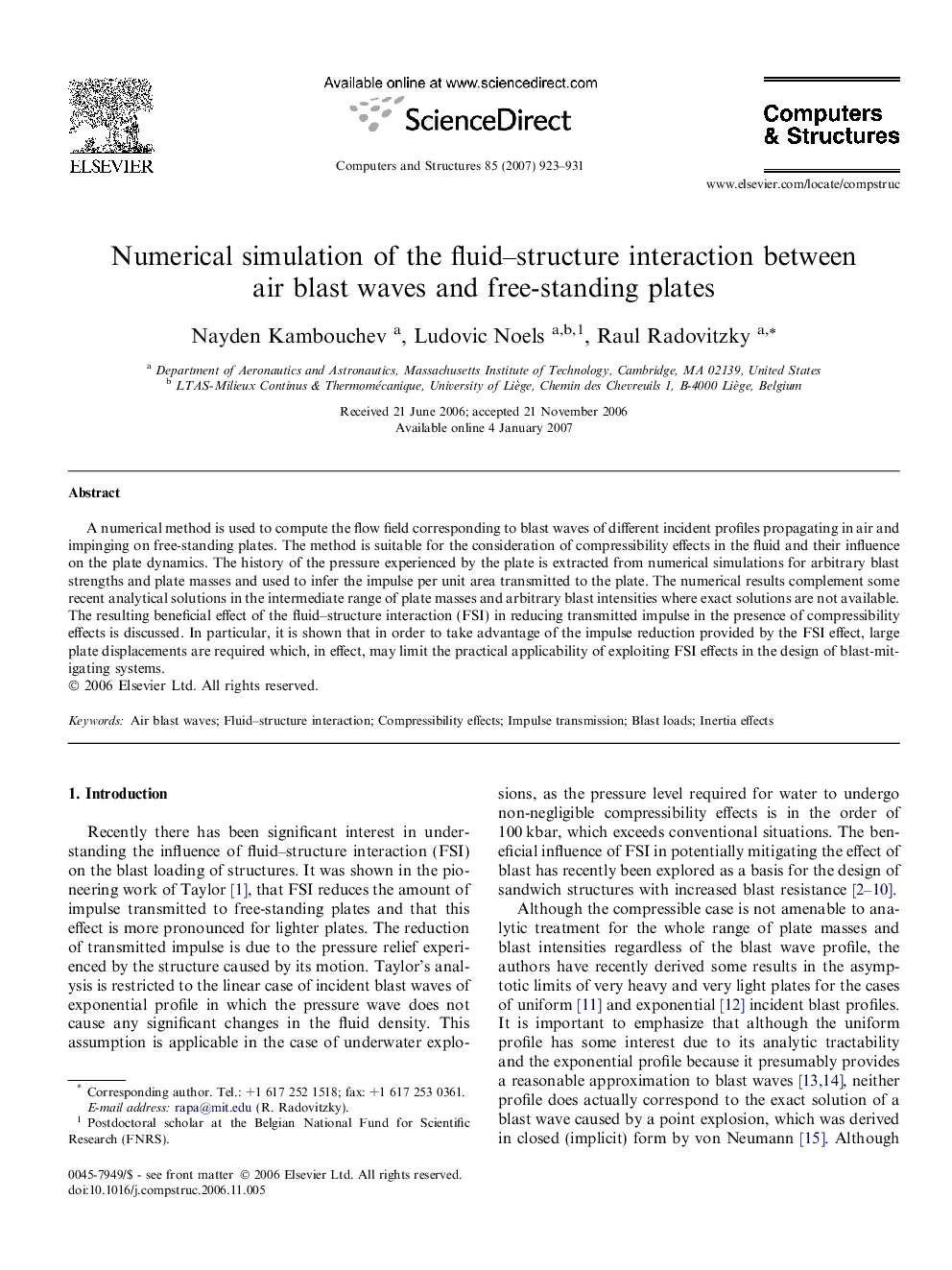| Article ID | Journal | Published Year | Pages | File Type |
|---|---|---|---|---|
| 510417 | Computers & Structures | 2007 | 9 Pages |
A numerical method is used to compute the flow field corresponding to blast waves of different incident profiles propagating in air and impinging on free-standing plates. The method is suitable for the consideration of compressibility effects in the fluid and their influence on the plate dynamics. The history of the pressure experienced by the plate is extracted from numerical simulations for arbitrary blast strengths and plate masses and used to infer the impulse per unit area transmitted to the plate. The numerical results complement some recent analytical solutions in the intermediate range of plate masses and arbitrary blast intensities where exact solutions are not available. The resulting beneficial effect of the fluid–structure interaction (FSI) in reducing transmitted impulse in the presence of compressibility effects is discussed. In particular, it is shown that in order to take advantage of the impulse reduction provided by the FSI effect, large plate displacements are required which, in effect, may limit the practical applicability of exploiting FSI effects in the design of blast-mitigating systems.
